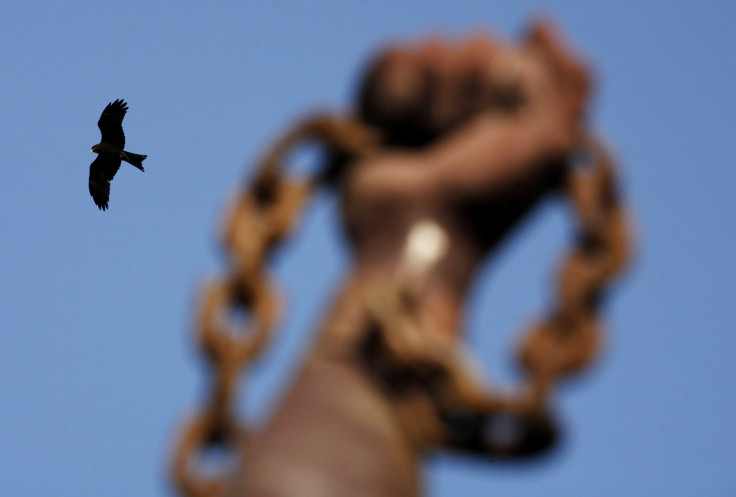What Is Juneteenth? 12 Facts About The History Of Black Independence Day

President Lincoln issued the Emancipation Proclamation on September 22, 1862, but it took close to three more years before the full emancipation of America’s slaves was completed.
This historic moment came on June 19, 1865, when General Gordon Granger arrived in Galveston, Texas, to issue General Order No. 3, officially freeing America’s final slaves. This date, known as Juneteenth, has since been celebrated as Black Independence Day by African Americans across the nation.
In celebration of Juneteenth, we’ve gathered 12 facts about the history of the American holiday.
1. Though President Lincoln issued the Emancipation Proclamation in 1862, demanding that the Confederate states return to the Union or their slaves would be permanently freed, the order was ignored. Even more undermining to the Proclamation was the fact that it did not affect slave-holding states that didn’t succeed from the Union, leaving a massive number of slaves still in bondage.
2. Texas and Oklahoma are the only states that recognize Juneteenth as a legal holiday. But more than 200 cities across the nation celebrate Juneteenth in some way, ranging from daylong festivals to longer events.
3. The National Juneteenth Observance Foundation is working to pass legislation to have June 19 designated as Juneteenth Independence Day, according to the Root. However, the Senate rejected the resolution.
4. According to Juneteenth.com, it isn’t known exactly why it took two and a half years for slaves in Texas to learn that they had been freed. Some accounts claim that a messenger was killed while heading to Texas to deliver the news; others say that the slaves' owners purposely withheld the information from them. General Granger began Order No. 3 with the following statement informing slaves of their new status as freed Americans: "The people of Texas are informed that in accordance with a Proclamation from the Executive of the United States, all slaves are free. This involves an absolute equality of rights and rights of property between former masters and slaves, and the connection heretofore existing between them becomes that between employer and free laborer."
5. In the decades following Juneteenth, several former slaves would travel back to Galveston to celebrate their Independence Day. The day would include entertainment activities such as rodeos, baseball and barbecuing. Guest speakers and prayer services would also be featured.
6. Strawberry soda pop and barbecuing have become closely associated with Juneteenth celebrations.
7. One of the first documented land purchases in honor of Juneteenth was organized by Rev. Jack Yates, according to Juneteenth.com. The fundraising effort brought in $1,000, leading to the purchase of Emancipation Park in Houston.
8. In Mexia, Texas, a local Juneteenth organization bought Booker T. Washington Park, the site of Juneteenth celebrations since 1898.
9. The celebration at Booker T. Washington Park was at one time one of the nation’s largest. More than 20,000 blacks would travel to the site over the course of the weeklong event.
10. Juneteenth celebrations declined in the early 20th century. This was partly the result of changes in the way new generations learned about the history of slaves, relying more on textbook teaching than on direct family testimony. Also, many textbooks claimed that the Emancipation Proclamation marked the end of slavery in the United States, with no attention paid to Granger's Order No. 3 in 1865.
11. Juneteenth became an official state holiday in Texas on Jan. 1, 1980. The effort was led by Al Edwards, a black state legislator. It was the first Juneteenth celebration given state recognition.
12. A modern-day movement has been launched to urge more blacks to recognize the importance of the day and its role in black history and culture.
© Copyright IBTimes 2024. All rights reserved.






















